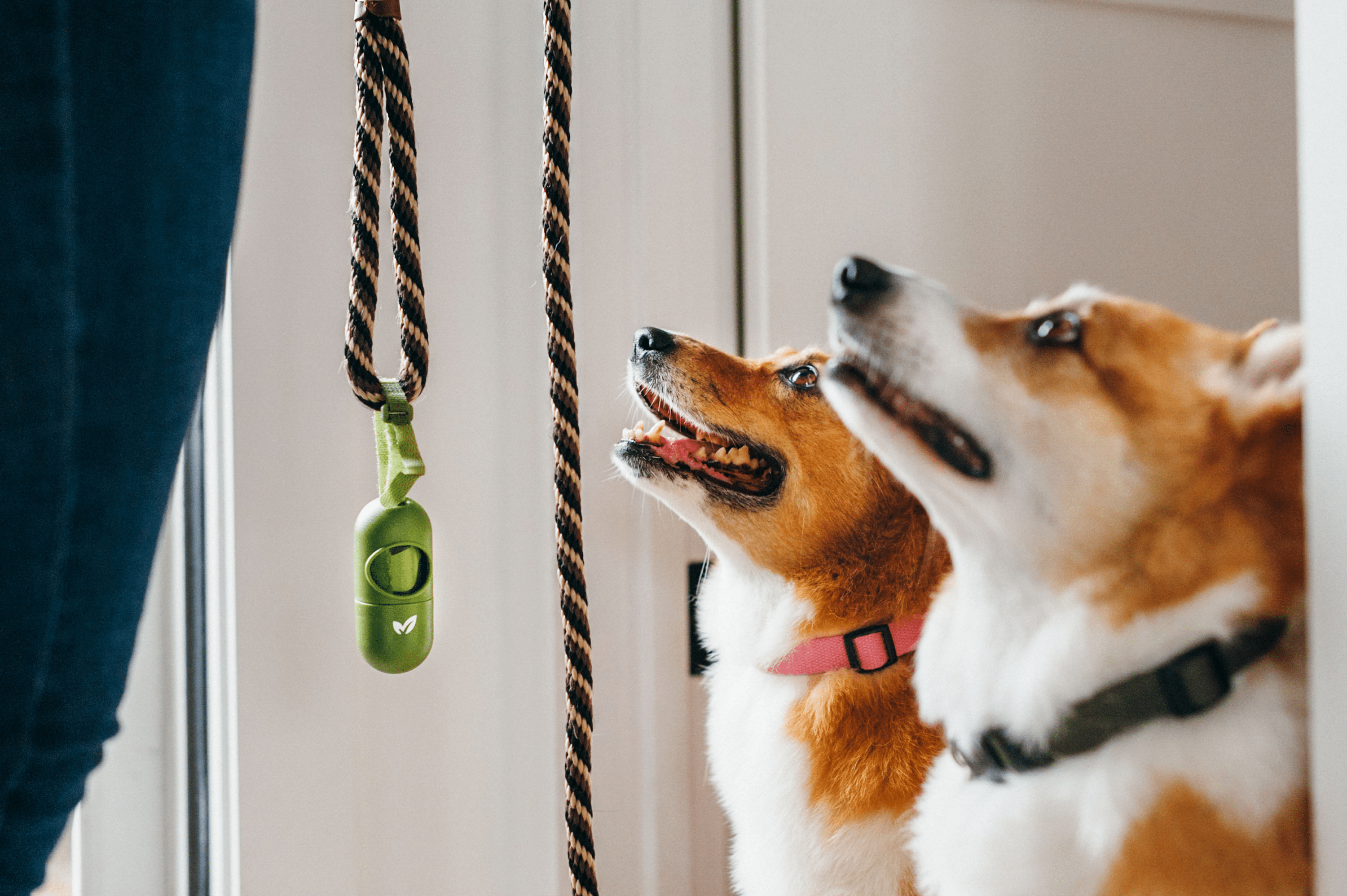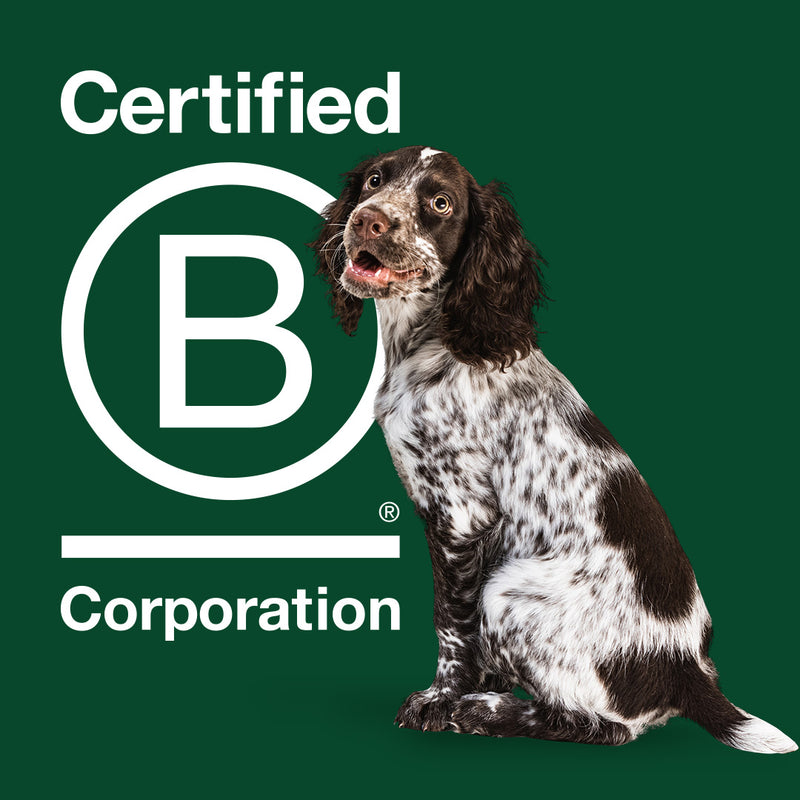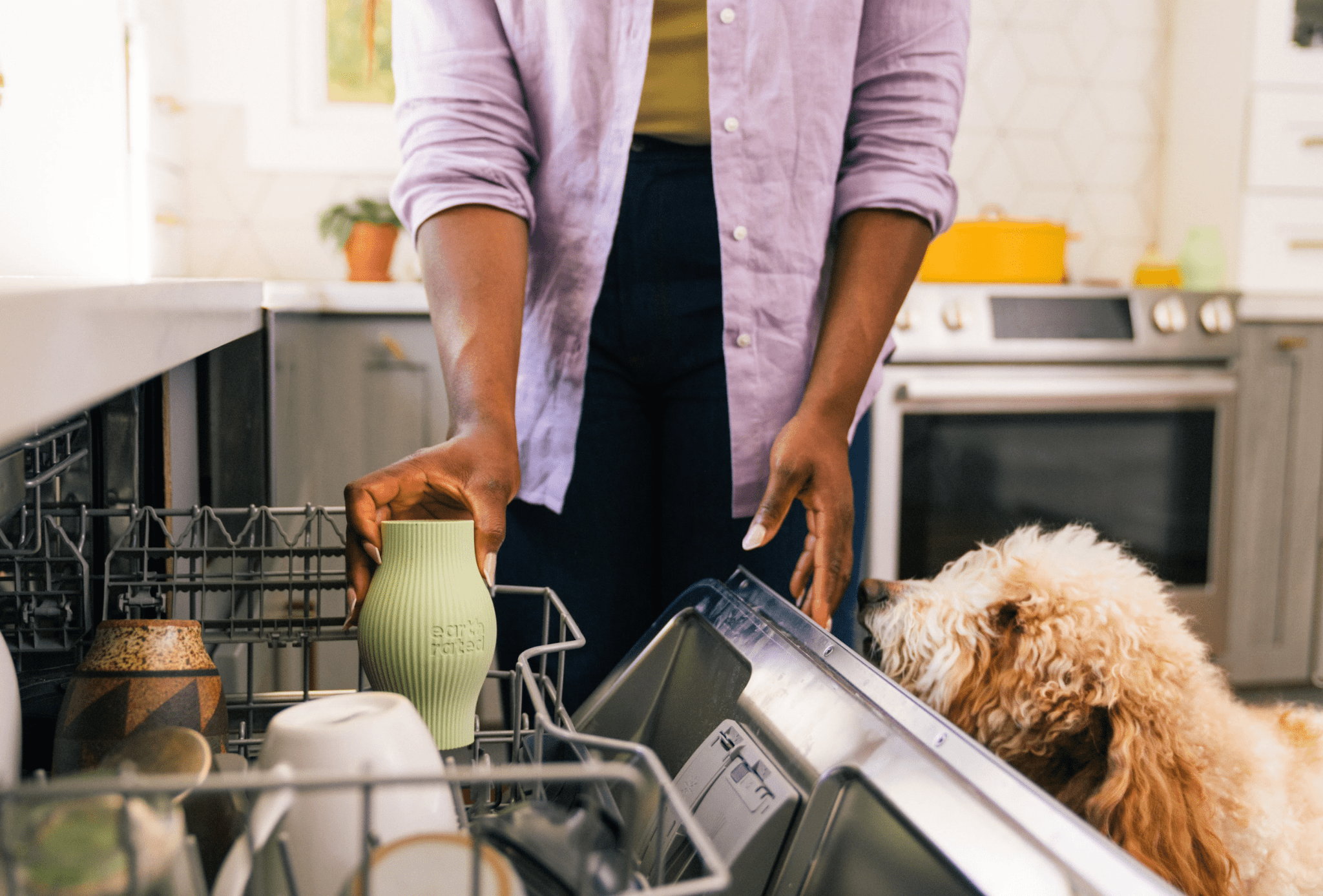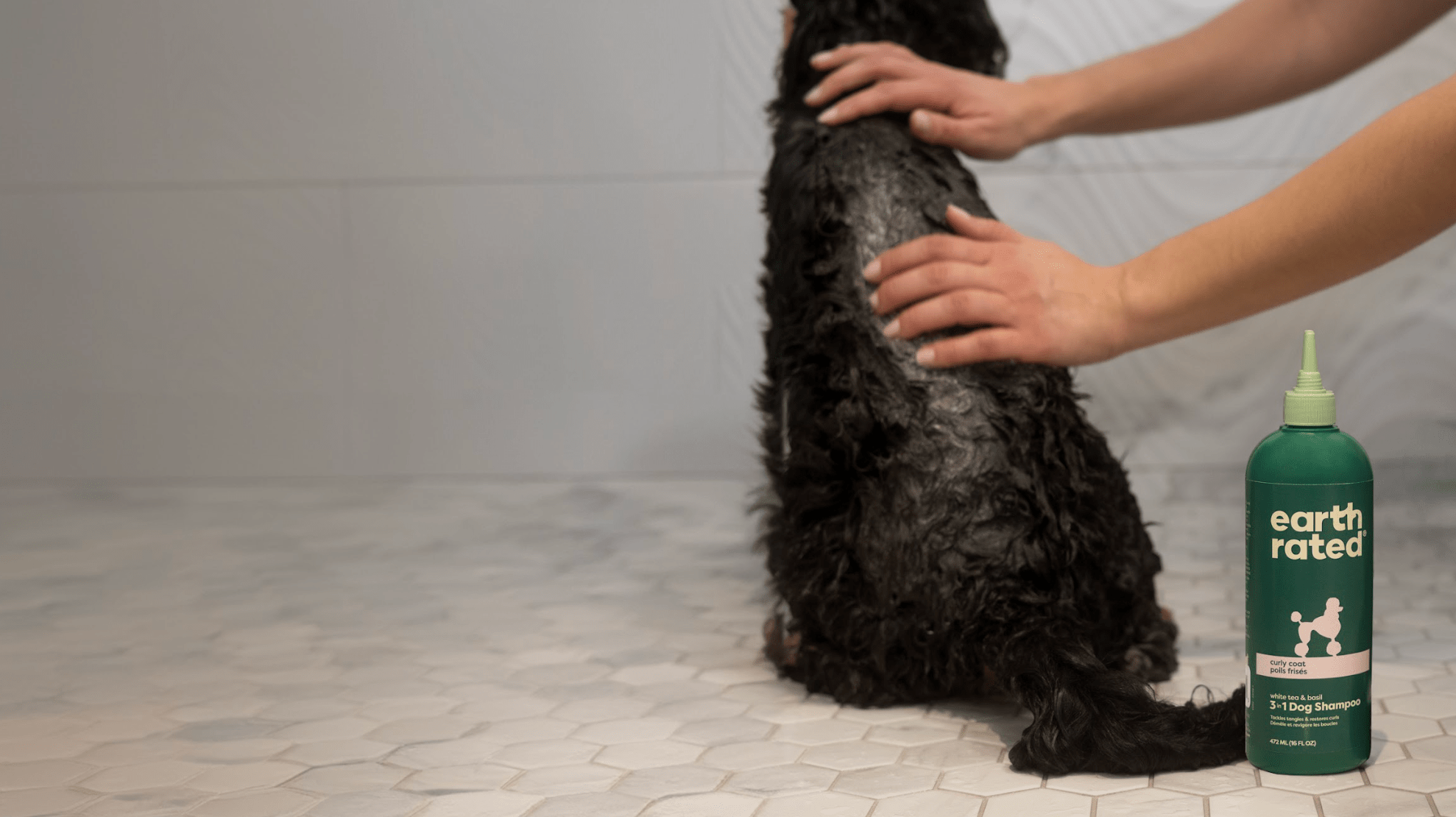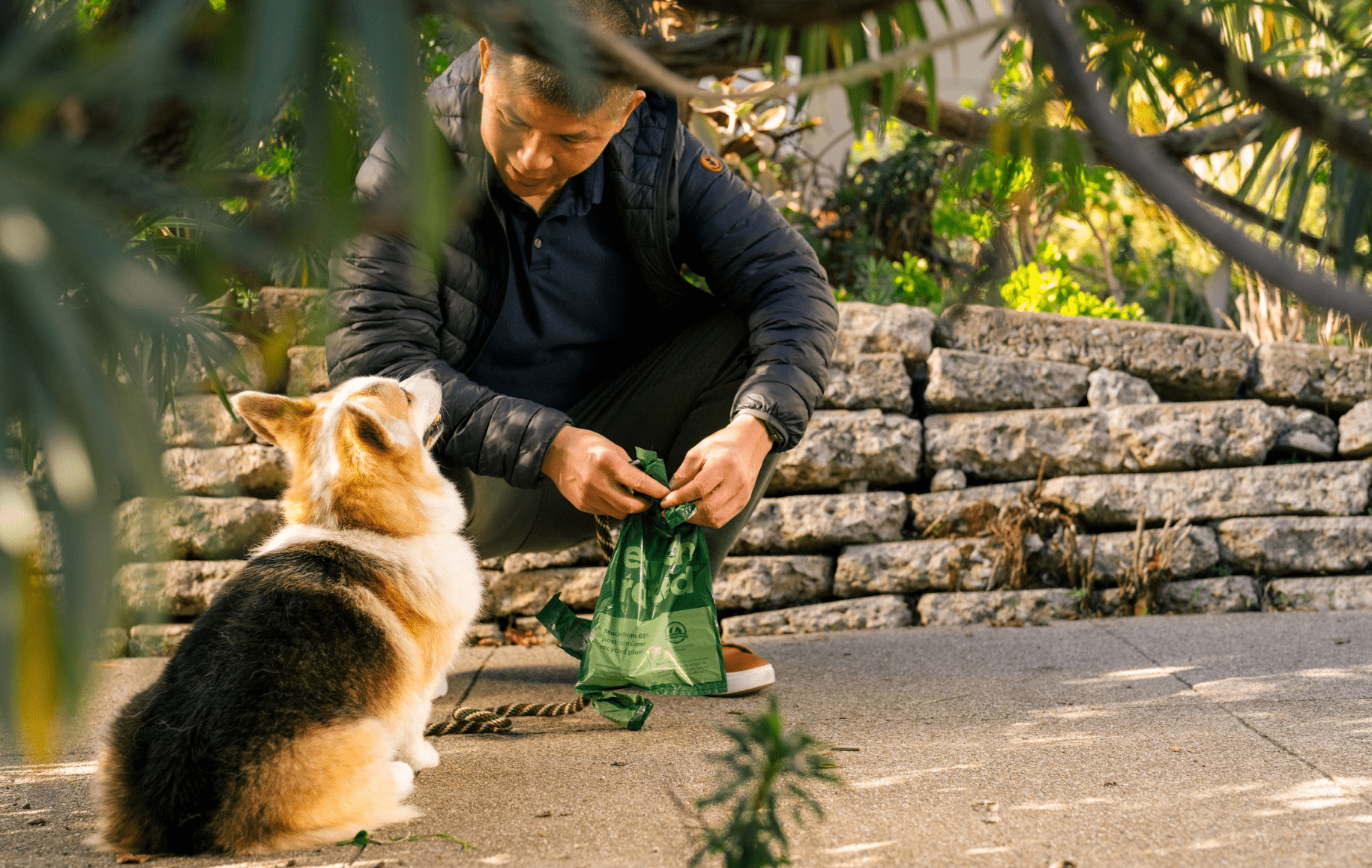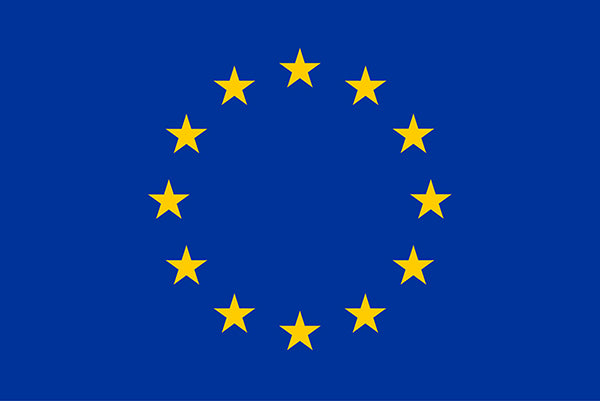From how you train your dog to how you feed them, almost every facet of dog ownership has a debate surrounding it. One of the most heated controversies is pet nutrition. Should you feed your dog a raw food diet or kibble? Raw diets consist of organ & muscle meats, bones, and other animal parts. Dogs on a raw diet can also eat raw eggs, some dairy (like yogurt), and dog-safe fruits, vegetables and grains. Kibble is generally made with grains, protein sources, starches, and fruits & vegetables. It's supplemented with vitamins and minerals to meet your pet's nutritional needs. Higher-quality kibble contains more protein than starches, and many brands are even grain-free. There are pros and cons to each diet. But this debate begins with the question: do dogs even need to eat plants?
Are Dogs Carnivores or Omnivores?
Like many meat-eating animals,
dogs have sharp teeth meant to tear and slice meat. And they are taxonomically classified as carnivores under the order Carnivora. So, does that settle the debate? Nope. Being classified as a carnivore doesn't always mean the animal eats a carnivore diet. Cats, raccoons and bears are all under the order Carnivora, but they each have very different eating habits. Raccoons aren't exactly known to be
picky eaters. They eat almost anything, from insects to berries - and the contents of your trash bins. Invertebrates make up the biggest part of a raccoon's diet, followed by plants, then animals. They are essentially omnivores. Bears in North America will often forage for berries or acorns to supplement their diet of meat and fish. And the giant panda is an herbivore - but by choice, not design. Giant pandas eat almost only bamboo even though their digestive system is set up for meat. This isn't ideal. Bamboo isn't very nutritious, so they need to eat constantly while also limiting physical activity. However, bamboo is what works for their habitat. All this to say: an animal’s environment plays more of an influence in their diet than their taxonomical classification. Just because their body is designed to eat only meat doesn’t mean they will. Now, cats are obligate carnivores. Cats need taurine, an amino acid found in meat, to survive. Dogs, on the other hand, can produce taurine on their own. This
could mean dogs don’t need a strict carnivore diet as cats do.
Dogs Descended from Wolves – Should They Eat Like Wolves?
Wolves aren't equipped to digest grains. They shouldn't live off a diet of dry kibble. But dogs are not wolves. Domestic dogs have been selectively bred for thousands of years. And while dogs don't need starch in their diets, they have genes that let them process and use grains and cereals. Dogs have adapted to be resilient, eating what they can forage so as to not go hungry. So domestic dogs can and will eat as omnivores. However, there’s a big difference between surviving and thriving. Just because dogs can survive on plants, does not mean that they will be at their healthiest in doing so. There is no evidence that sufficiently proves dogs will thrive on plant-based diets to date, Many people believe dogs are facultative carnivores, meaning their primary nutritional source is meat, but they can survive without. So, are dogs better suited to eat only meat? What does that mean for your pet? Should you feed them a raw diet, or is kibble the way to go?
Raw Diets Can Have Health Benefits
Raw food enthusiasts claim the diet has given their pets more energy, and healthier skin and fur. The bones in a raw food diet can be good for your dog's dental health. And meat is more nutrient-dense, leading to smaller poops. But making complete raw diets from scratch takes a lot of work. And if done wrong, they can be dangerous to you and your pet.
The Dangers of a Raw Food Diet
It's hard to fulfill your pet's nutritional needs with a raw diet. You can't only provide Fido with tasty (to you) muscle meat. There are a lot of conflicting opinions on the ideal makeup of a raw diet.
Raw Fed Dogs recommends a diet of 80% meat/sinew/ligaments and fat, 10% bone, 5% liver and 5% other organs. Meanwhile, the Biologically Appropriate Raw Food Diet recommends a much higher percentage of bone. Whichever portion makeup you choose, homemade diets can still be tricky. A
study from the UC Davis School of Veterinary Medicine found that even when using recipe books written by veterinarians, homemade meals are rarely nutritionally complete. It’s very difficult to feed your pet a balanced diet on your own. Outside of nutritional deficiencies, raw meat can contain dangerous bacteria.
Studies quoted by the AMVA (American Veterinary Medical Association) have found listeria and clostridium in raw food diets. These dangerous bacteria can cause your dog to become ill. Other bacteria in raw meat, like salmonella, are often tolerable to your dog but can be incredibly harmful if spread to humans. In general, handling raw meat requires precaution to prevent transmitting infectious diseases - especially around children, the elderly, and the immunocompromised. But did you know these diseases can also be transmitted through your pet’s poop? There are 23 million bacteria per gram of your
dog’s poop. These bacteria can transfer to your hands if you aren’t using strong enough poop bags to pick up after your dog. That’s why here at Earth Rated we created extra-thick bags with a 100% leak-proof guarantee, to make it as safe and easy as possible for responsible dog owners to clean up after their pets. As for avoiding harmful bacteria from raw meat, the AMVA recommends cooking all food before feeding it to your dog. Others recommend freezing meats to cut the risk of parasites. On top of this, you'll also have to disinfect your dog's food bowl as soon as they've finished eating to prevent bacteria from growing. Every time. Raw diets can be time-consuming, and very hard to get right if you’re preparing the raw meat yourself.
Commercially Prepared Raw Dog Food is More Accessible
If home cooking isn’t your style, there are more convenient ways to feed your dog a raw diet. Frozen raw dog foods are sold in patties that you can portion out according to your dog’s caloric requirements. They can come in a complete meal form, containing the essential nutrients your dog needs. Another option that’s easier to store is dehydrated and freeze-dried raw foods. These are good for travelling and are much easier to prepare than frozen raw meals. As a bonus, purchasing dehydrated raw foods bypasses the need to handle raw meat. Buying commercially prepared complete raw food for dogs removes the need to balance the food yourself. As well, most brands use meat tested for the aforementioned bacteria. Commercially prepared raw foods are a safer bet to make sure your dog gets the nutrients they need, while also being safer to handle. Putting your dog on a raw food diet doesn’t mean you have to feed them exclusively meat. You can add extras to your dog’s raw diet in the form of edible bones or dog-safe produce (link 7 people foods article still in basecamp). However, bones come with their own controversy.
Not All Bones are Safe to Give Your Dog
Cooked bones are not good for your dog. They can easily splinter or break, injuring your pup’s mouth or digestive tract. Cooked bones are also a choking hazard since small pieces can break off and block your pet’s windpipe. However, most raw bones are edible. Turkey and lamb bones are soft enough to chew and digest. It’s best to supervise your dog while they’re chewing to make sure they don’t choke, and the bone doesn’t splinter. A sure way to incorporate bones into your dog’s diet without the risk of injury is to grind up the bones into a powder and sprinkle it over their food.
Kibble Has its Perks
There's a reason kibble has been dog owners' go-to for decades. Kibble is convenient. It's easy to store and easy to pour into your pet's bowl, no preparation required. And there's a far lower risk of spoilage. Kibble formulas are created to meet dogs' nutritional needs. Check for labels that state the food provides "complete and balanced nutrition for dogs based on AAFCO feeding trials". When feeding dogs kibble, it's best to realize that not all brands are equal. Especially because there have been some downright sinister things going on in the commercial kibble world.
The Dark Side of Kibble
In the 1990s, trace amounts of phenobarbital, the drug used to euthanize dogs, were discovered in some commercial pet foods.
The FDA investigated but couldn't determine the type of animal the tainted meat was coming from. Other investigations in different countries have suggested it's very likely there are dog and cat meat in
pet food There is plenty of evidence to suggest that euthanized animals, roadkill and
diseased livestock enter our pet's food.
This famous article (warning, graphic photo of deceased pets) offers a close-up look at an American rendering plant and explains how these animals can end up in our pets' food. Even the former president of the AAFCO (the organization determining what should go in pet food)
admitted on camera that there's no way of telling what animals are in commercial pet food. Vague ingredient names like "meat" and "bone meal" could be a cover for dog meat making it into dog's kibble. Does this mean you should avoid all commercial kibble? No. But just because a big-name brand is sold at a big-name store, that doesn't mean it's always trustworthy. If you feed your dog kibble, find a high-quality local brand that names every ingredient on the label. Look for clear protein sources and avoid food with common allergens like wheat and corn. High-quality kibble will also contain fewer filler ingredients like rice. Fillers add calories without adding nutritional value. Your dog can do without them.
Which Is Better? Kibble or a Raw Diet?
Both diets have their pros and cons. It all comes down to finding what’s right for you and your dog. If you’re thinking about switching your dog to a raw food diet, it’s important to consult with a veterinary nutritionist first. Sudden diet changes can leave your pet with an upset stomach! If feeding your dog kibble makes the most sense for you to ensure their nutritional needs are met, that doesn’t mean you can’t feed them other foods as
occasional treats. And if neither raw nor kibble makes sense for you and your pet, there are still other food options out there!
Alternatives to Raw Food or Kibble Diets
Canned food is an increasingly popular alternative to kibble. There is generally a higher protein content in canned food versus dry kibble, and fewer carbs. Since the food comes canned, there’s less need to add artificial preservatives. The high moisture content in canned food makes it easy to eat & digest and helps promote weight loss. Another option rising in popularity is dehydrated dog food. Since the dehydration process simply removes water from food, nutrients aren’t lost as they might be during other types of food processing. Dehydrated food is easy to store and will last for about a year. It’s much easier to prepare than a raw diet and has similar benefits.
Choose the Diet that's Best for You and Your Dog
Whichever diet you choose, make sure your pup is getting the nutrients they need to live strong and healthy. If you have any doubts, it’s always a good idea to consult with your veterinarian. The best meal plan is whatever works best for you and your dog! Next article:
What’s the Deal with Compostable Poop Bags?
